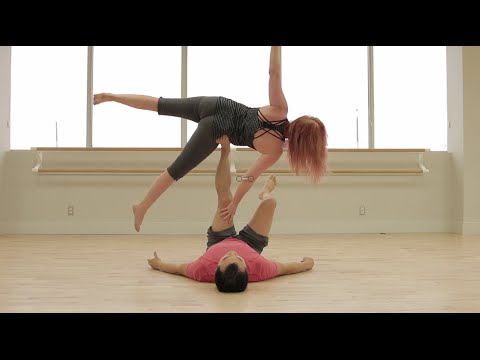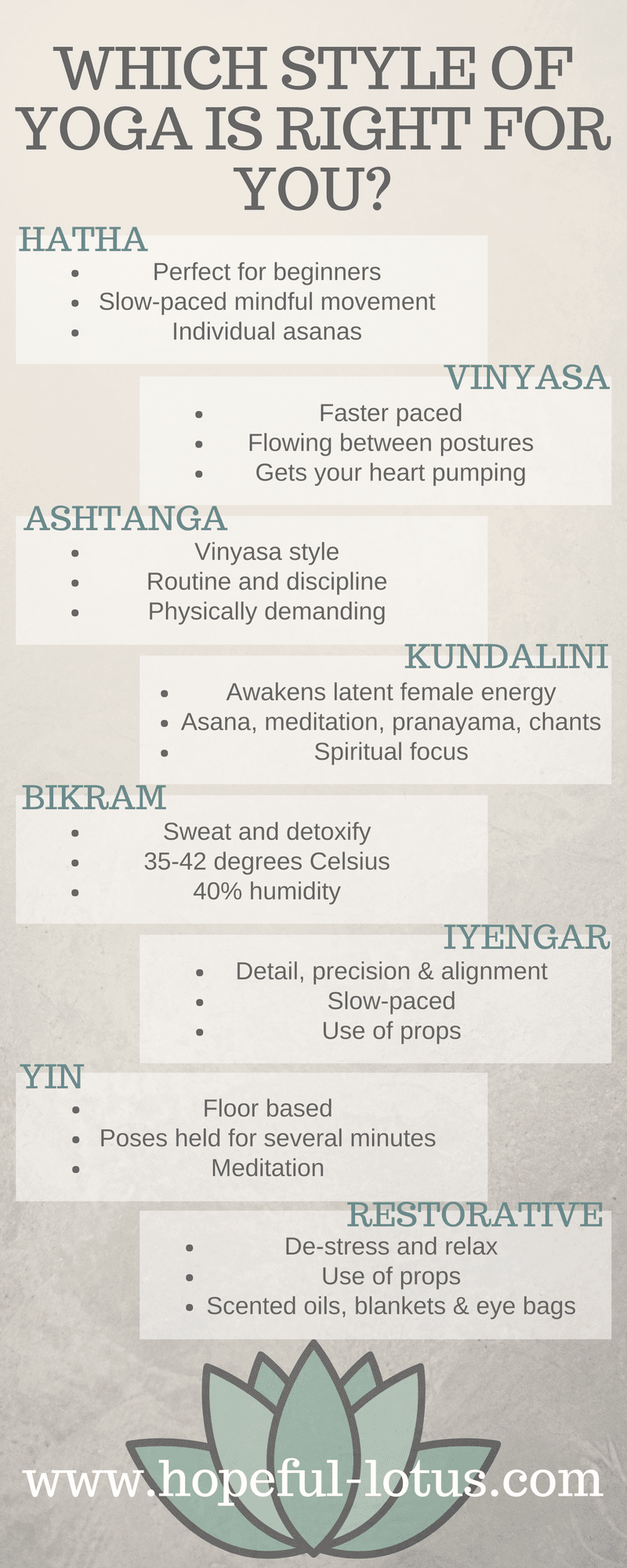
Yoga is a great way to improve your flexibility. It can reduce stiffness and pain in the joints. It's common to feel restricted if you're just starting the practice. This inflexibility can cause poor posture or strain on the knee joint. It also reduces levels of dopamine and serotonin, which are neurotransmitters that improve mood and reduce stress.
Yoga can help with chronic low back pain. One study showed this. This condition is among the most common types of back pain for veterans, and it can significantly impact a person's quality of life. After the 12-week yoga program, participants experienced lower disability scores and greater intensity. The participants also experienced a significant decrease in opioid usage, which is good news for people with chronic low back problems. Yoga practice has many benefits, which have been well documented.
A number of yoga exercises can help reduce stress. They can help improve your overall health and flow of lymph. During practice, you'll increase the lymph drainage system, which is a vital part of the body. The lymphatic system is responsible to prevent infection, kill cancer cells, and dispose of harmful waste products. Yoga can improve your sleep by reducing stress levels.

Constipation can be exacerbated by stress, but yoga can reduce this by improving your posture and increasing your flexibility. Yoga can also reduce suffering, which is a great benefit. Stress is a key contributor to bowel problems. Yoga can be a great way to relieve constipation. It helps you be more present and improves your ability focus, learn, hold information, and learning.
Research has also shown that yoga may improve your heart health. It has been found that it can increase the amount of hemoglobin in the blood, which is the protein that carries oxygen to the tissues. This is yet another positive effect of yoga. In addition to improving your heart health, it can also reduce the risk of cardiovascular disease and strokes. It has been shown to increase muscle strength and flexibility in the hands and feet. It is also known to increase balance, which can be important for many reasons.
Yoga has many benefits, including the spinal discs. The spinal discs that lie between the vertebrae help prevent herniated discs from causing nerve damage and compression. By keeping these discs mobile, the spine can get the nutrients it needs. You should therefore practice a variety if yoga poses in order to maintain spinal health. You can increase your flexibility by doing asanas in this position.
Yoga's benefits are well-known. Yoga can be used to combat anxiety and depression. A 2015 study found that people who practice yoga twice per week had lower stress levels and improved their cardiovascular function. This also means that they're less prone to heart disease. This is a very small but powerful benefit. As an added bonus, it helps them feel better about themselves and their bodies.

Yoga improves the heart, just like any other form of exercise. This is because yoga helps to pump blood throughout the entire body. This means that it helps to improve the overall health of the heart. This reduces the chance of developing heart disease. Yoga can improve your cardiovascular health and lower your risk of developing heart disease. There is also no reason why you shouldn't try this exercise.
Yoga can improve your physical health and reduce your risk of developing heart disease. It reduces cholesterol and other inflammation compounds, which slows down the progression of heart disease. It can even reverse DNA reactions and lower cortisol. It is a great way to prevent heart disease, migraines, and osteoporosis. It's also good for your mental health. It can help you manage stress and improve focus.
FAQ
How often should you exercise per week?
It all depends on how much time and what kind of exercise you like. An average guideline is to do moderate-intensity aerobic activity 3 to 5 days per semaine. It is important not to overdo it. To get the best results from your exercise, it is important to be consistent.
Which exercises work best for you?
It all depends on what type of fitness goals you have. Some people choose to focus on endurance activities, such as swimming, cycling, and running. Others prefer lifting weights, or using resistance bands. There are many types of exercise programs today. Select the one that best suits your needs.
How many calories should you consume each day?
This varies from person to person. An average person needs 2000-2500 calories per day. You need to determine how many calories you need based on age, gender, height, weight, activity level, and lifestyle.
Do Men Need A Gym Membership?
For men, a membership to a gym is not required. If you sign up for a gym, however, your money will be much more valuable.
Many gyms offer free trial memberships so you can try the facilities out before paying for anything.
You can use the gym whenever you like, and it won't cost anything. You can cancel your membership as soon as you decide whether you love or hate it.
Is Cardio Better Than Strength Training?
Both are equally great. Cardio is better if you are looking to build muscle faster.
Cardio burns far more calories per min than strength training. It also burns fat more efficiently.
Although strength training can increase muscle mass, it is more difficult than cardio to do so.
What is your favorite workout order?
It all depends on your goals. To build muscle mass, you should first lift heavy weights. Then you can move to cardio. For those who want to lose weight or exercise, you can switch from cardio to strength-training.
Cardio can be done if you want to just lose fat. You can then add strength training.
If you are looking for muscle mass, cardio should be your last option. Cardio stimulates growth hormones and helps build muscle mass.
It is important to eat before going to work out. This will give your muscles more fuel, so they work harder. You will feel happier during your workout.
Statistics
- 10 pounds in a month is likely during a lean bulking phase, especially for beginners. (muscleandstrength.com)
- Cardmembers earn 5% Back at Amazon.com with a Prime Credit Card. (amazon.com)
- According to the American Academy of Dermatology (AAD), men over 50 are at a heightened risk of developing it. (healthline.com)
- An estimated calorie range for moderately active adult males falls between 2,200 to 2,800 calories per day, depending on age. (eatright.org)
- Candidates and applicants must pass all four tests at 70% (minimum level) to graduate from Basic Deputy U.S. Marshal (BDUSM) Training. (usmarshals.gov)
External Links
How To
How does a man become fit in just 30 days?
Breaking down your fitness goals into smaller, more manageable steps is the best way for you to reach your fitness goals.
This is why you should make sure that you're working toward your goal every day. This could mean anything from doing 10 pushups for 5 minutes to running 3km.
Positive results will be achieved if you do this consistently over time.
Be consistent is key. It is important to persevere until you succeed.
What is the difference in Aerobic Fitness and Anaerobic Fitness
Anaerobic fitness is the ability to do intense physical work without oxygen. Anaerobic pathways provide sufficient energy for high-intensity exercise. Anaerobic pathways include glycolysis and creatine phosphate.
Aerobic fitness, on the other hand, is a sustained low-intensity exercise. While performing aerobic exercises, oxygen is used as the primary source of fuel for the cells. In other words, aerobic pathways provide more energy than anaerobic.
You need to build up your aerobic capability if you plan on running a marathon. If you don't focus on increasing your aerobic capacity, you will not be able finish the race.
Aerobic fitness may also be known as cardiovascular fitness. The most common methods for assessing cardiovascular fitness include VO2 max testing or step tests.
Tests for VO2 Max
VO2 max is the maximal amount of oxygen (O2) that the body uses during exercise. This test measures the amount O2 that the body can use when exercising.
This test measures cardiovascular fitness in a way that is most accurate. However, the test can only be administered by highly trained professionals and requires expensive equipment.
Step Tests
Step tests are an easy but powerful way to determine your cardiovascular fitness. These tests require you to walk or run on a track or treadmill for a set amount of time, depending on your weight and age.
These tests are simple to perform, cost-effective, and easily accessible from almost any location. For example, you could walk on a treadmill 20 minutes and then stop. Throughout the session your heart rate should not exceed a specified range.
This method is called the Bruce Protocol. Bruce, a runner, developed this protocol after realizing that his heart rate did not rise when he ran longer distances.